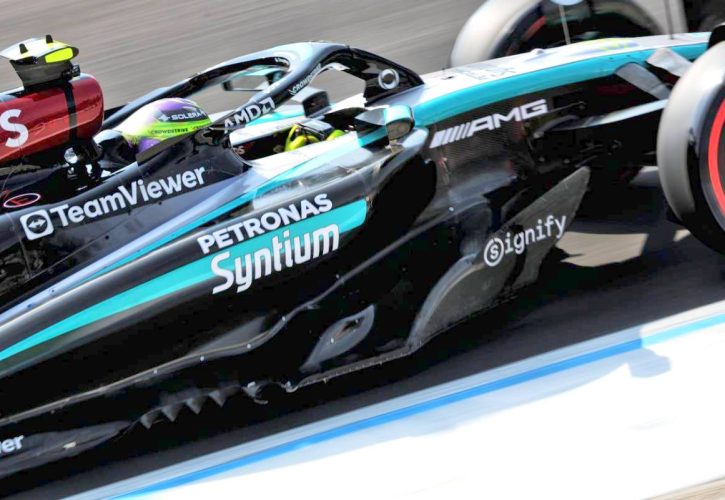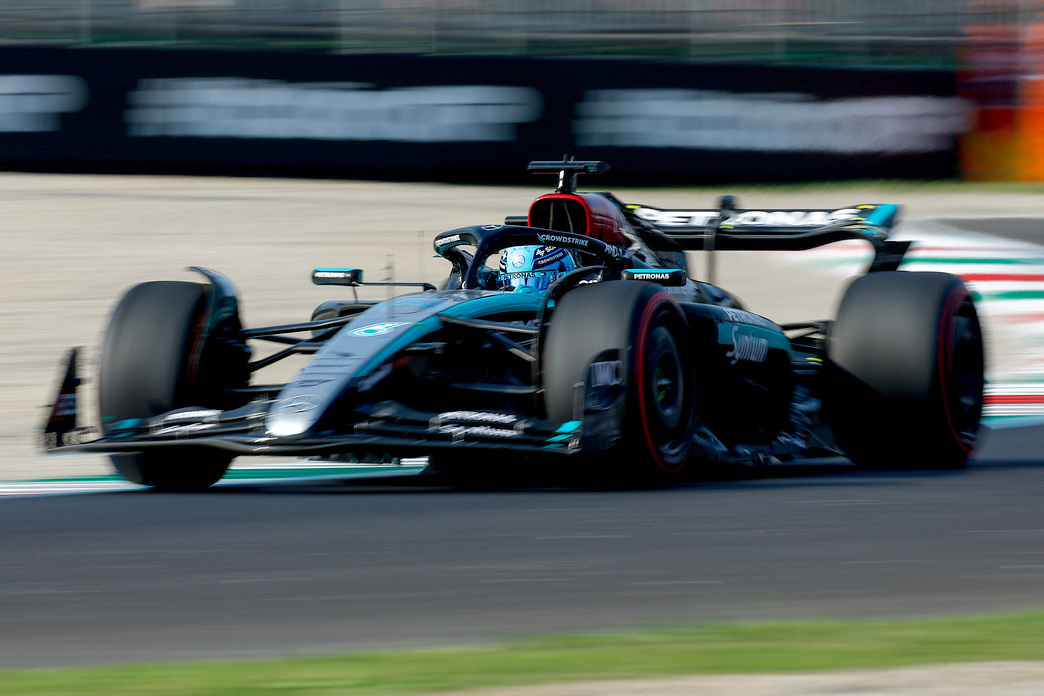
Mercedes admits it is still struggling to understand the full impact of the floor upgrade introduced on its W15 silver arrow at the Belgian Grand Prix, and which has left the team with lingering questions about its influence on its car’s performance.
Despite being confident that the upgrade is generating the expected load, the team is observing subtle side effects and inconsistent results across different circuits.
Mercedes trackside engineering director Andrew Shovlin shed light on the issue, noting that while the team has gathered considerable data, unlocking the full potential of the upgrade is proving complex.
"Over the last three races, we’ve done various compares of the packages and principally comparing the floor, and what we are confident in is that it’s generating the load that we expect," Shovlin explained in Mercedes post-Monza video on YouTube.
"How do we know that? We’re measuring the forces that it generates on the road through the suspension.
"We are also looking at the pressures that are generated across the car, and we can correlate that with what we’re seeing in the wind tunnel, and that allows us to get a pretty decent read on whether it’s doing what we expect."
However, while the data suggests that the floor is delivering the aerodynamic load as predicted, the real challenge lies in determining how it affects the car’s handling.
"It’s important to note this was not a very large gain that we were expecting, it was quite a small package that we introduced, but we’re confident that it is generating that load, he said.
"The more difficult question that we need to answer is: Is there anything subtle in the handling characteristics that this package might be doing that we haven’t anticipated?"
“That’s quite difficult to assess because the car will perform differently track-to-track."

Indeed, Mercedes has encountered fluctuations in car performance from track to track, with some circuits showcasing the car’s strengths and others revealing weaknesses, independent of the aerodynamic package.
“At some tracks it’s been working very well, other circuits we’ve struggled with the balance of the car regardless of the aerodynamic spec. And, yes, the last two races haven’t been as good as some of the ones that preceded it.”
Shovlin pointed out that the inconsistent results could simply be the natural variation that comes from different circuits, but the team is committed to further analysis to better understand the situation.
“It may well be that’s just the normal variation from track-to-track, but that’s what we’re going to be looking at over the next few days, and on top of that there are other updates that we’re bringing into the system.
"There’s quite a lot for us to consider, but we do have a lot of data now, and we can go off and use the next few days to learn what we can from that,” Shovlin concluded, underlining the meticulous approach the team will take as they continue to evaluate their car’s performance and the upgrade’s role in it.
As Mercedes aims to close the performance gap to their rivals, understanding the intricacies of the floor upgrade will be crucial in the remaining races of the season.
Keep up to date with all the F1 news via Facebook and Twitter







